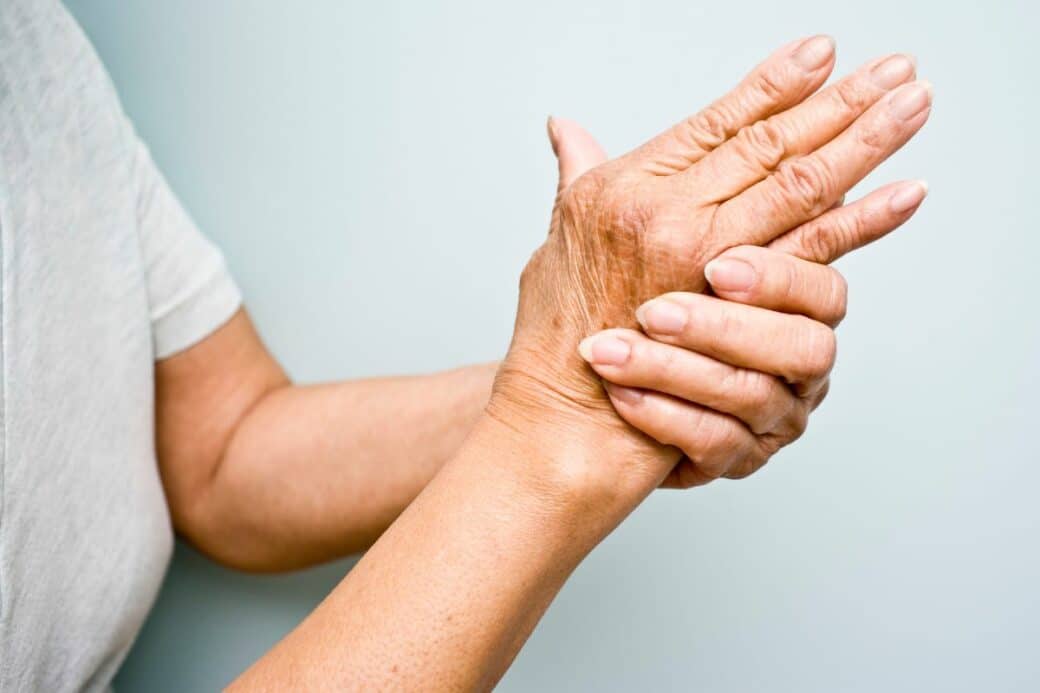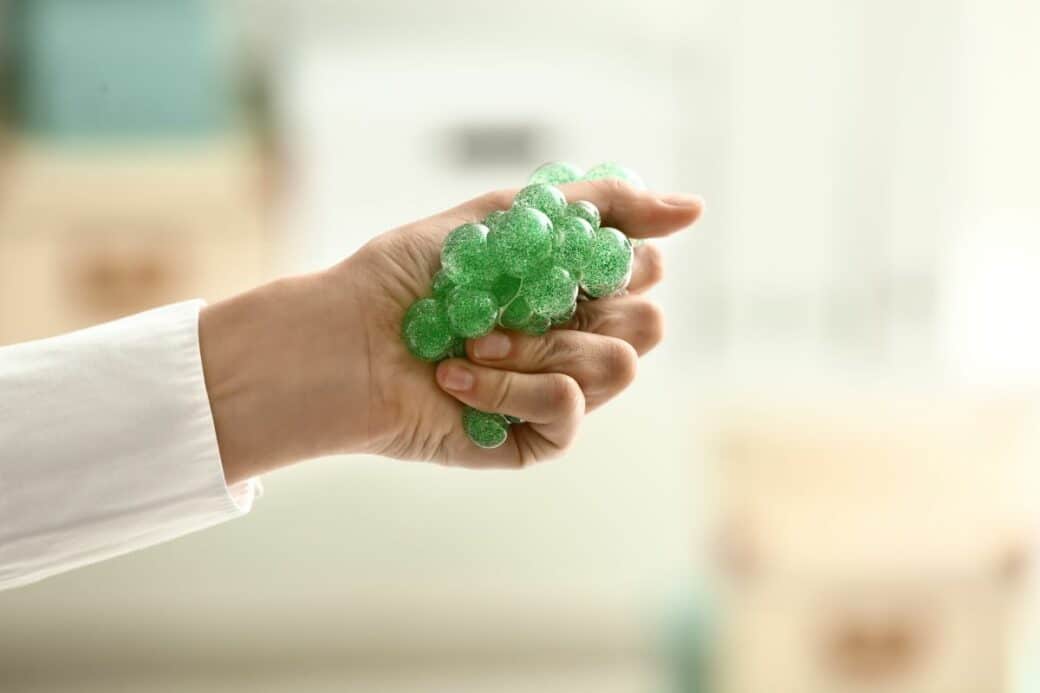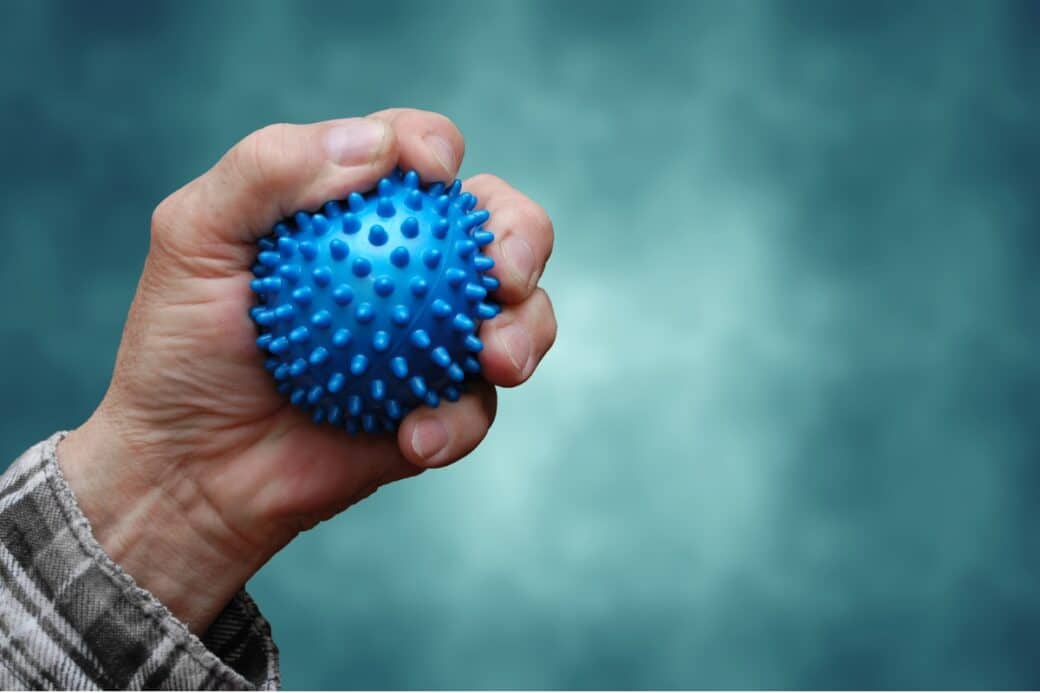Are you tired of dealing with the pain and discomfort caused by arthritis in your hands? Look no further than stress balls! These small, palm-sized wonders can offer much-needed relief and comfort to those suffering from arthritic hands. With their therapeutic benefits, stress balls provide a simple and affordable solution to ease your pain, reduce inflammation, and improve mobility. So, grab a stress ball and experience the soothing sensations it can bring to your arthritic hands.

Stress Balls For Arthritic Hands: Understanding Arthritis
What is Arthritis?
Arthritis is a condition that affects the joints, causing inflammation, pain, and stiffness. It is essential to understand that arthritis is not a single disease but rather an umbrella term that encompasses more than 100 different types of joint diseases. The most common types include osteoarthritis, rheumatoid arthritis, and psoriatic arthritis. While arthritis can affect any joint in the body, it is frequently experienced in the hands, which can significantly impact hand function and overall quality of life.
Different Types of Arthritis
As mentioned earlier, there are various types of arthritis. Osteoarthritis is the most common type, characterized by the breakdown of cartilage in the joints. Rheumatoid arthritis is an autoimmune disease that causes chronic inflammation in the joints and can eventually lead to joint deformity. Psoriatic arthritis is a condition that occurs in individuals with psoriasis, an autoimmune disease affecting the skin. Other forms of arthritis include gout, lupus arthritis, and juvenile idiopathic arthritis. Each type of arthritis has distinct characteristics and may require different treatment approaches.
Common Symptoms of Arthritis
Arthritis manifests in different ways, but common symptoms include joint pain, swelling, stiffness, and decreased range of motion. In the case of arthritis in the hands, individuals may experience difficulty gripping objects, opening jars, or performing tasks that require dexterity. The pain and stiffness can be debilitating, affecting not only hand function but also overall quality of life. It is important to recognize these symptoms and seek appropriate medical attention for accurate diagnosis and treatment.
Impact of Arthritis on Hand Function

Handgrip Strength and Arthritis
Arthritis can have a significant impact on handgrip strength, which refers to the force exerted by the hand while gripping objects. Studies have shown that individuals with arthritis often experience reduced handgrip strength due to joint inflammation and pain. This can make simple everyday tasks challenging and impede one’s ability to carry out activities of daily living independently. Restoring and maintaining handgrip strength is crucial for improving hand function in individuals with arthritis.
Challenges in Everyday Activities
Arthritic hands can present several challenges in everyday activities. Simple tasks such as opening a door, holding a pen, or tying shoelaces can become difficult and painful. Arthritis can also affect the ability to perform work-related tasks or engage in hobbies that require fine motor skills. The impact of arthritis on hand function can be emotionally and psychologically distressing, leading to feelings of frustration, helplessness, and reduced self-esteem. Finding effective ways to manage these challenges is key to maintaining independence and a good quality of life.
Pain Management for Arthritic Hands
Pain management is a crucial aspect of arthritis treatment, particularly for arthritic hands. Various approaches can be used to alleviate pain, including medication, physical therapy, and lifestyle modifications. However, it is important to explore complementary therapies that can provide non-pharmacological pain relief. One such therapy that has gained popularity is the use of stress balls.
Exploring Stress Balls
What are Stress Balls?
Stress balls are small, squeezable objects designed to be held and manipulated in the hand. They are typically made of foam or gel materials to provide a comfortable grip. Stress balls are often used to relieve stress, improve focus, and relax the mind. However, they also offer several benefits for individuals with arthritic hands.
Origin and Uses of Stress Balls
Stress balls have been used for centuries in various cultures as a tool to promote relaxation and relieve tension. Originally, they were made from dried beans, rice, or other similar materials. In recent times, stress balls have become more popular and widely available, with different designs and materials. They are commonly found in offices, schools, and homes, offering a quick and convenient solution for stress relief.
Different Types of Stress Balls
Stress balls are available in a variety of types, each offering unique benefits. Foam stress balls are soft and pliable, making them comfortable to squeeze and manipulate. They are ideal for individuals with arthritis, as they provide gentle resistance without causing excessive pressure on the joints. Gel-filled stress balls, on the other hand, offer a more firm and therapeutic squeeze. They provide better resistance and can be beneficial for individuals looking to build hand strength and improve flexibility. It is important to choose the type of stress ball that suits your individual needs and preferences.
Benefits of Stress Balls for Arthritic Hands
Promoting Hand Strength
One of the key benefits of stress balls for individuals with arthritic hands is their ability to promote hand strength. Regular squeezing and manipulation of stress balls help strengthen the muscles in the hand and fingers. This can help improve handgrip strength, making it easier to perform everyday tasks that require dexterity. Strengthening the hand muscles can also provide stability and support to the joints affected by arthritis, reducing pain and stiffness.
Improving Hand Flexibility and Dexterity
Arthritis often leads to decreased hand flexibility and limited range of motion. Stress balls provide an excellent way to improve hand flexibility and dexterity. Squeezing and releasing the stress ball exercises the muscles and tendons in the hand, promoting flexibility and increasing the range of motion. Regular use of stress balls can help combat the joint stiffness associated with arthritis, enabling individuals to perform tasks with greater comfort and ease.
Reducing Pain and Stiffness
The repetitive squeezing and manipulation of stress balls can stimulate blood flow to the hand, promoting pain relief and reducing stiffness. This increased blood circulation helps deliver oxygen and essential nutrients to the affected joints, aiding in the management of arthritis symptoms. The act of squeezing a stress ball can also divert attention away from pain, providing temporary relief and promoting relaxation.
How to Use Stress Balls for Arthritis Relief
Choosing the Right Stress Ball
When selecting a stress ball for arthritis relief, it is important to consider certain factors. Opt for a stress ball that is comfortable to grip and provides the right level of resistance for your needs. If you have limited hand strength, a foam stress ball may be more suitable, as it offers a softer squeeze. If you are looking to build strength and improve flexibility, a gel-filled stress ball with firmer resistance may be more beneficial. Experiment with different stress balls to find the one that feels most comfortable and effective for you.
Recommended Exercises with Stress Balls
There are various exercises you can perform with stress balls to alleviate arthritis symptoms and improve hand function. One simple exercise is to squeeze the stress ball with your hand, holding the squeeze for a few seconds, and then releasing. Repeat this exercise for several repetitions, gradually increasing the duration and number of squeezes as your hand strength improves. You can also try rolling the stress ball between your palms or fingers to further engage the hand muscles and increase flexibility.
Frequency and Duration of Exercise
When using stress balls for arthritis relief, it is important to establish a regular exercise routine. Start with short sessions of 5-10 minutes, gradually increasing the duration as you build strength and endurance. Aim to perform stress ball exercises at least three times a week, but listen to your body and adjust the frequency based on your comfort level. Remember that consistency is key, and regular exercise will yield the best results in improving hand function and reducing arthritis symptoms.
Comparing Different Types of Stress Balls for Arthritis
Foam Balls vs. Gel Balls
Foam balls and gel balls are the two main types of stress balls commonly used for arthritis relief. Foam balls provide a gentle and comfortable squeeze, making them ideal for individuals with arthritis. They offer a softer resistance that is less likely to cause discomfort or aggravate joint pain. Gel balls, on the other hand, are firmer and provide greater resistance. While they can be beneficial for improving hand strength, individuals with more severe arthritis may find them too challenging or uncomfortable to use.
Size and Texture Considerations
When choosing a stress ball for arthritis, considering the size and texture is important. Ensure that the stress ball is large enough to comfortably fit in your hand, allowing for a secure grip and full range of motion. Additionally, consider the texture of the stress ball. Some individuals may prefer a smoother texture, while others may find a textured surface provides better grip and tactile stimulation. Experiment with different sizes and textures to determine which stress ball feels most comfortable and effective for you.
Impact of Ball Resistance Level on Effectiveness
The level of resistance offered by a stress ball can significantly impact its effectiveness for arthritis relief. Foam balls offer a milder resistance, suitable for individuals with varying levels of hand strength. They provide a gentle workout for the hand muscles without causing excessive strain or discomfort. Gel balls, on the other hand, offer a higher level of resistance, making them more suitable for individuals looking to build strength and improve finger dexterity. It is important to choose the resistance level that suits your individual needs and abilities.
Precautions When Using Stress Balls for Arthritis
When to Avoid Stress Ball Exercises
While stress balls can be beneficial for individuals with arthritis, there are certain situations where stress ball exercises should be avoided. If you are experiencing acute inflammation or a flare-up of arthritis symptoms, it is recommended to rest and avoid any excessive hand movements, including stress ball exercises. Additionally, if you have any open wounds, cuts, or infections on your hands, it is best to avoid stress ball exercises to prevent further irritation or complications.
Avoid Exacerbating Pain or Damage
It is essential to perform stress ball exercises with caution and avoid exacerbating pain or causing further damage to the joints. If you experience any sharp or intense pain during exercise, stop immediately and reassess your technique. Do not force your hand to squeeze the stress ball beyond your comfort level. It is normal to feel some resistance and mild discomfort, but if the pain persists or worsens, consult with a medical professional for further guidance.
Consulting with a Medical Professional
Before incorporating stress ball exercises into your arthritis management plan, it is advisable to consult with a medical professional. They can provide personalized advice based on your specific type and severity of arthritis. A medical professional can assess your current condition, evaluate any potential risks, and guide you in the appropriate use of stress balls for optimal pain relief and hand function improvement. They can also offer additional treatment options or therapies that may be beneficial in conjunction with stress ball exercises.
Scientific Studies on Stress Balls and Arthritis
Proven Benefits of Stress Ball Exercises
Several scientific studies have explored the benefits of stress ball exercises for individuals with arthritis. A study published in the Journal of Hand Therapy found that regular use of stress balls improved hand strength and reduced pain in individuals with rheumatoid arthritis. Another study in the journal Arthritis Care & Research reported that stress ball exercises resulted in increased grip strength and improved hand function in individuals with osteoarthritis. These studies highlight the efficacy of stress ball exercises in managing arthritis symptoms and enhancing hand function.
Future Research Directions
While existing studies demonstrate the positive effects of stress ball exercises, there is still room for further research. Future studies could focus on evaluating the long-term benefits of stress ball exercises and their impact on overall quality of life in individuals with arthritis. Additionally, investigating the optimal exercise protocols, including duration, intensity, and specific exercises, can provide valuable guidance for individuals seeking to incorporate stress ball exercises into their arthritis management plan.
Medical Endorsements of Stress Balls
Medical professionals are increasingly recognizing the benefits of stress balls for individuals with arthritis. Many healthcare providers and therapists recommend stress ball exercises as a non-pharmacological approach to alleviate pain, improve hand function, and enhance overall well-being. The use of stress balls as a complementary therapy alongside medication and other treatment methods is becoming more prevalent, offering individuals a holistic and multifaceted approach to managing their arthritis.
Real-life Testimonials of Arthritis Patients using Stress Balls
Patients’ Experiences and Feedback
The experiences and feedback from arthritis patients who have incorporated stress balls into their management plan are highly encouraging. Many individuals report a reduction in pain and stiffness, improved handgrip strength, and increased flexibility and dexterity. Patients with arthritis in their hands often express gratitude for the newfound ability to perform daily tasks with greater ease and reduced discomfort. These real-life testimonials serve as powerful motivations for others with arthritis to consider incorporating stress balls into their daily routine.
Increased Quality of Life
The use of stress balls for arthritis relief has been shown to have a significant impact on the overall quality of life for individuals with arthritis. By providing pain relief, improving hand function, and promoting relaxation, stress balls help individuals regain independence and a sense of control over their arthritis symptoms. The ability to engage in activities that were previously challenging or painful can greatly enhance one’s physical and emotional well-being, leading to an overall improvement in quality of life.
Comparison with Other Therapy Methods
While stress balls are just one component of an overall arthritis management plan, they offer distinct benefits compared to other therapy methods. Unlike medication, stress balls provide a non-pharmacological approach to pain relief, reducing the risk of side effects. They can be easily incorporated into daily routines and used as a form of self-care. Compared to more invasive treatments or surgeries, stress balls offer a safe and accessible option for individuals looking to find relief and improve hand function.
Incorporating Stress Balls into an Overall Arthritis Management Plan
Role of Exercise in Arthritis Treatment
Exercise plays a key role in the management of arthritis symptoms. Regular physical activity has been shown to reduce pain, maintain joint flexibility, improve muscle strength, and enhance overall joint functioning. Stress ball exercises offer a convenient and enjoyable way to incorporate exercise into an arthritis management plan. By specifically targeting hand strength and flexibility, stress balls complement other forms of exercise and can provide localized benefits for individuals with arthritis in their hands.
Complementary Therapies (medication, diet, etc.)
Stress balls should be seen as a complementary therapy alongside other arthritis management strategies. Medications prescribed by healthcare professionals, such as pain relievers or anti-inflammatory drugs, may be necessary to manage severe arthritis symptoms. Additionally, maintaining a healthy diet and managing weight can also play a significant role in reducing joint inflammation. Stress balls serve as a non-pharmacological and non-invasive method to enhance pain relief, improve hand function, and promote relaxation, working synergistically with other therapeutic approaches.
Sustaining Long-term Use of Stress Balls
For stress balls to be effective in managing arthritis symptoms, it is essential to sustain long-term use. Incorporating stress ball exercises into a daily routine can help ensure consistency and maximize the benefits. Set realistic goals for yourself and gradually increase the duration and intensity of your stress ball exercises as your hand strength improves. Find ways to make stress ball exercises enjoyable, such as listening to music or watching TV while squeezing the stress ball. By integrating stress balls into your lifestyle, you can reap the long-term benefits and maintain improved hand function in the face of arthritis.
In conclusion, stress balls offer a valuable and accessible tool for individuals with arthritic hands to find relief and improve hand function. From promoting hand strength and flexibility to reducing pain and stiffness, stress balls have shown great promise through scientific studies and real-life testimonials. By incorporating stress ball exercises into your arthritis management plan, under the guidance of a medical professional, you can embark on a journey of pain relief, improved hand function, and enhanced quality of life. So, why wait? Grab a stress ball, squeeze away the pain, and rediscover the joy of using your hands with ease and comfort.




